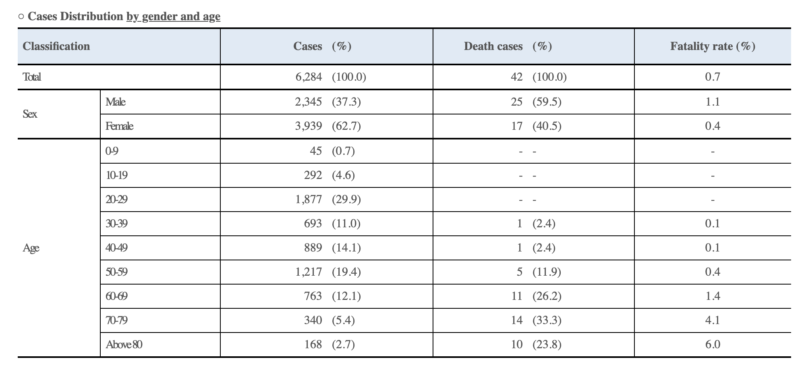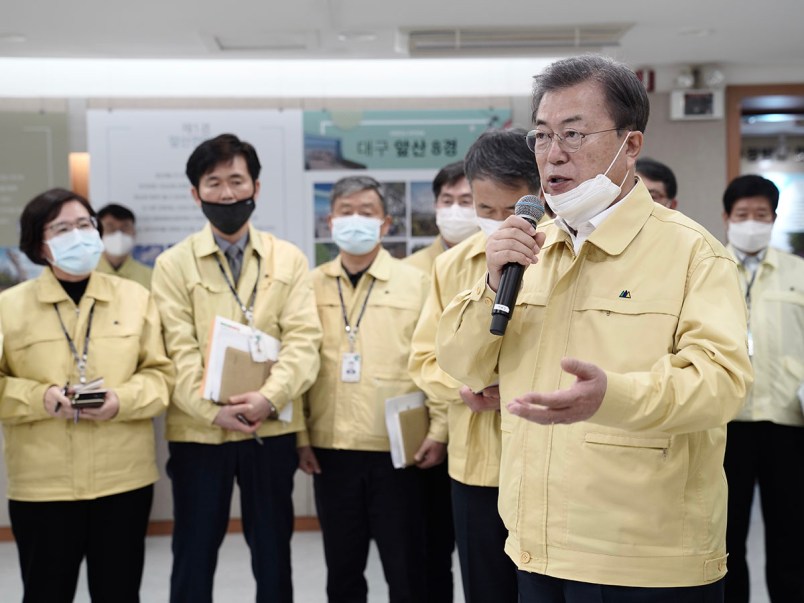We should pay close attention to what is happening in South Korea. According to the latest data, South Korea has the second largest outbreak of COVID-19 in the world after China. Italy and Iran have only slightly fewer cases though it’s likely that South Korea’s higher number is driven in part by more aggressive testing.
But they appear to be making progress getting the outbreak under some control. In the last four days the numbers of new cases have been 518 (Thursday), 483 (Friday), 367 (Saturday) and 248 (Sunday). The country is doing sufficient numbers of tests at scale that those decreases likely correspond to a significant degree to what’s happening in the larger community. South Korea has so far done more than 190,000 tests. They currently have the capacity for approximately 15,000 tests per day.
To give some sense of scale that’s roughly 50 times the numbers of tests done in the U.S. so far (approx. 4,300). And the U.S. population is more than six times the size of South Korea.
South Korea’s mortality rate for COVID-19 is also fairly low. There are currently 53 deaths out of 7,478 cases, for a case mortality rate of 0.7%. That is not far off the rate in China outside of Hubei province, the center of the outbreak. The age breakdown is comparable to data from other areas. (It is important to note that many infections are on-going. So the ratio is a snapshot in time. A significant number of people who die from COVID-19 do so after a significant period of time.)

Source: Republic of Korea, Centers for Disease Control and Prevention.
(News reports note that the disproportionately large number of infections in women is tied to the church or cult group which has been the epicenter of the outbreak. It’s disproportionately female. That is driving some of the low fatality rate: men: 1.1, women: 0.4. As in China, smoking rates are dramatically higher for men than women in South Korea.)
Why all of this matters, beside the relative good fortune of South Koreans, is that it suggests aggressive efforts at containment and mitigation have a big effect. For South Korea, aggressive testing at scale looks critical to that. Just as important, South Korea is a much more open society than mainland China. From the start, the government has tried a much more open approach to trying to contain the disease, doing aggressive non-pharmaceutical interventions but generally not restricting people’s movement. As TPM Reader AK reminded us this morning in his report from Shanghai, even outside of Wuhan the level of clampdown was and remains intense and likely way beyond anything that is possible in the U.S. or other industrial democracies, either from a state capacity or legal-constitutional perspective.
South Korea is different. I want to be clear that we certainly don’t know that South Korea has turned the corner on its COVID-19 outbreak. Everything we know about this pandemic has to be considered tentative. They only have a string of days when the number of new infections has gone down each day. But it seems like they’re headed in the right direction. And their model is one that should be adaptable to the U.S., at least from a technological and civil liberties perspective.






